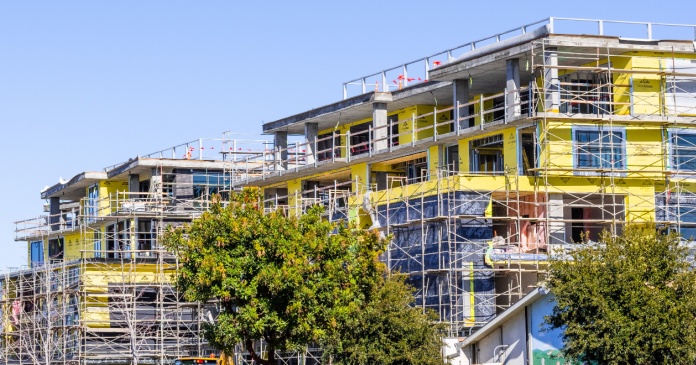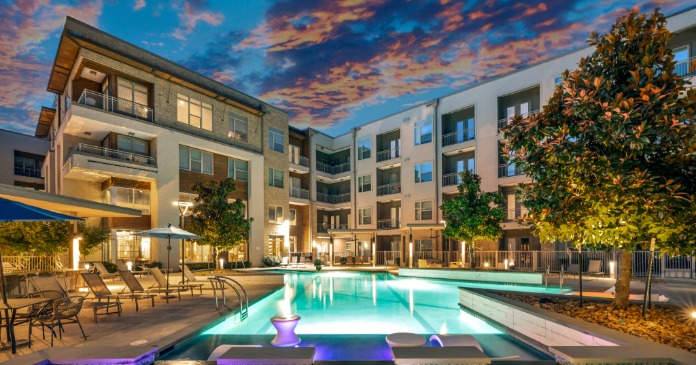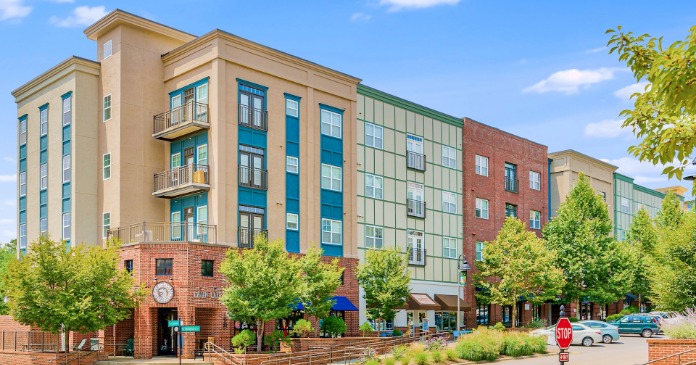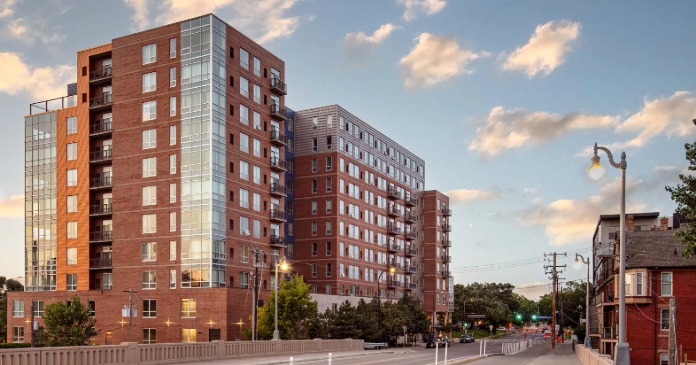Because they are not traded on the national stock exchanges, private REITs do not have to answer to the SEC. They are not burdened by SEC regulations and the reporting and disclosure expense that increased enormously with the implementation of Sarbanes-Oxley requirements a few years ago.
Private REITs also need not worry much about transaction activities– potential dilution to FFO or increasing dividends to share holders because their new owners are more focused on IRR. And that is making a big difference in the ability of recently privatized REITs like Gables Residential and AMLI Residential to take advantage of today’s liquid transaction market.
“I think the biggest change would be that our investment strategy is more value-driven than FFO-driven,” said David Fitch, CEO of Gables Residential, which was acquired and privatized in October 2005, adding that the freedom from quarterly shareholder scrutiny not required of privately traded REITs allows the company to be more opportunistic and entrepreneurial in its approach to the business.
Greg Mutz, CEO of AMLI Residential, which followed Gables into the private sector four months later, agreed, saying, “We are more focused now on values and less on quarterly earnings. In our new format, we are targeting a significant increase in the barrier markets. We want to establish a national footprint, rather than the regional footprint that we primarily had as a public company.” The freedom of privatization is helping AMLI to realize its long-held bi- coastal dream.
Mutz and John E. Allen, along with Life Investors, a Cedar Rapids, Iowa–based insurance company, founded AMLI Realty Co. (ARC) in 1980, deriving the company’s name from the first letters of both men’s last names and the insurance company’s initials. AMLI went public in 1994.
That same year, Trammell Crow Residential (TCR), which has a long history of seeding successful companies, transformed TCR’s Southeast and South Central divisions into a REIT and Gables Residential was born. Both REITs were purchased within the space of about 18 months in 2005 and 2006, at the height of the heated M&A activity that started in the multifamily sector about three years ago.
Morgan Stanley Real Estate announced plans to buy AMLI for $2.1 billion in November 2005, just about a month after the close of Gables’ purchase by Lions Gables Apartment Fund LP, an investment fund managed by a JV of ING Clarion Partners and Lehman Brothers. Those two deals followed the merger of Colonial Properties Trust and Cornerstone Realty, which Colonial bought for $1.5 million in a deal that closed in the spring of 2005 and the acquisition of Summit Properties by Camden Property Trust for $1.9 billion at the beginning of 2005.
During a Q4 2004 earnings call, Gables execs highlighted the disparity between the then-mid-$30 share price and the true value of the company, which they believed was actually in the mid-$40 per share range, taking into consideration Gables healthy development pipeline and asset value boosted by condo converters’ appetite for upscale apartment communities. By late May, ING Clarion and Lehman Brothers signed an agreement with Gables to buy the company for $43.50/share, or a total of $2.8 billion.
During AMLI’s Q2 2005 earnings call, Mutz told analysts the REIT’s board would consider a similar deal, while also referring to the disparity between Wall Street’s valuation and the actual value of the company. Six months later, Morgan Stanley’s offer was announced. Morgan Stanley’s Prime Property Fund LLC bought all of AMLI’s common shares and limited partnership units for $37.75 each, also in an all-cash deal, in February 2006, turning the private REIT into an operating company inside the fund. The per share purchase price represented a 20.7 percent premium over AMLI’s closing price on Oct. 21, 2005.
While the two companies’ assets were and are of similar quality, their markets were not. Both had, and still have, a presence in Austin, Dallas, Houston and Atlanta, but at the time of the merger Gables’ same store portfolio, which consisted of 79 communities with more than 20,000 stabilized units, also included assets in Washington, D.C., and San Diego, two of the hottest markets in the country. AMLI’s 75-asset, 28,000-unit portfolio, however, included only one coastal asset–AMLI at Ibis in West Palm Beach–purchased in April 2004 in a stalled effort to add the hot South Florida market to the REIT’s portfolio that also included the cooler markets of Denver, Indianapolis, Kansas City and suburban Chicago.
Since its purchase, AMLI has completely exited Indianapolis and trimmed its holdings in other Midwestern and Southwestern markets, acquired two Class A assets in the Seattle area–the 227-unit AMLI at Bellevue Park in Bellevue and the recently completed AMLI 535 in Downtown Seattle –and opened its first new regional office since going private, in that rapidly improving Washington market.
The REIT also bought two Southern California properties–the 521-unit AMLI at Empire Lakes in the Inland Empire city of Rancho Cucamonga and AMLI on the Boulevard in Sherman Oaks northwest of Los Angeles, and, most recently, the 149-unit AMLI on the Plaza in Morristown, N.J., and is looking for opportunities in Washington, D.C. Mutz expects to spend around $400 million on apartment assets this year.
Since going private, AMLI has reduced its debt financing, is much more all-equity focused and is finding it’s a lot easier to move capital from slow-growth markets to markets with better growth prospects now that the REIT is freed from quarterly earnings scrutiny, Mutz said. “If you can swap a dollar from Indianapolis and buy higher growth value in Southern California, it’s a good trade, although, in the short term, it is dilutive in a cash flow or earnings sense,” Mutz explained.
Over the next few years, he would like to see roughly half of AMLI’s total NOI coming from those four new markets–New Jersey, Seattle, Southern California and D.C.–and Florida. While actively seeking out development opportunities in the four new markets, AMLI also is looking more opportunistically for development sites in Southeast Florida, where Ibis remains its only Sunshine State community.
The company has closed its regional office in Indianapolis since the sale of the 996-unit AMLI at Riverbend to Newport Beach, Calif.,- based Core Realty Holdings LLC last October, but plans no more market exits in the foreseeable future. “We continue to monitor our markets, but right now we have no announced policy of cutting any more,” Mutz said.
Nor does he have any other new markets on his radar screen at the moment. “I think 10 or 11 markets is about right for our current size. The AMLI brand is an important component of our strategy, so we would like to have enough critical mass in each market to be able to gain brand traction and internet marketing and leasing strength and advantage,” he said.
On the development front, AMLI, which has a $1.25 billion development pipeline, broke ground last November at 900 S. Clark St. in Chicago on the 23-story, 440-unit high-rise AMLI 900. The REIT also is underway on AMLI on 2nd, a 231-unit, 18-story high-rise in Austin and is looking at other high-rise opportunities for the future. The company is acting as its own general contractor in the Texas deal, but not in Chicago, where AMLI has entered into a general contracting agreement with Windy City-based Walsh Construction.
“We will look selectively at third-party general contractors for more complicated, bigger projects, especially in our new markets, and, in our legacy markets and suburban stick-frame four- or five-story product, we probably will be the GC,” he predicted. The REIT has two communities underway that promise good value creation in Kansas City and Mutz expects Chicago will continue to be a significant market for the REIT. “We’ll continue to monitor it and I don’t think we will do radical things there, but, on balance, we will try to take advantage of markets where we think more growth will occur over the next two or three years and we’ll reduce our intensity in, but will not exit, markets where we think growth will be slower,” he said.
Fitch believes Gables’ long-honed skill in multifamily development and redevelopment helped to make it an attractive acquisition candidate for the partnership of ING, Lehman Brothers and around a dozen additional investors that are part of the Lions Gables Apartment Fund that now owns Gables’ stock.
The company’s principal focus now is on growth through development and, like AMLI, on broadening its national footprint. While the public Gables maintained a portfolio that was driven by the counter- cyclical nature of markets in order to maintain a steady, predictable flow of FFO, private Gables is entering new markets that expand beyond that market-cycle strategy.
“We are starting to look at Phoenix, Tampa and Orlando, which aren’t new markets to Gables, but we weren’t in them when we went private,” he said. In its previous life as a public company, Gables entered new markets by either establishing a management division or buying an already existing management company there. The REIT established a foothold in Washington, D.C., in 2001 with the acquisition of H.G. Smithy Company’s fee management operation and purchased Income Growth Property Management, a San Diego management company with 2,141 units under management three years later.
The company’s strategy of entering new markets through the third- party management door has been enhanced since privatization. “We merged Clarion Realty Services (CRS), a management division of ING Clarion, into Gables several months ago and that brought in an additional 5,000 units and added eight new markets for us where we provide management activity–Phoenix, Los Angeles, Seattle, Chicago, Boston, Baltimore, Tampa and Orlando. CRS is a very high quality group and manages assets of similar quality to Gables, so it was a very logical and happy union,” Fitch said, adding that it’s unlikely the company will develop or acquire in Chicago or Boston any time soon.
Gables, which likes to have around 1,200 units under management in a market before launching any development, primarily is focused on urban mixed-use, mid-rise product. “It’s a product type that we understand and there’s the possibility that we may run into a high- rise opportunity or two, but our power alley is in the mid-rise area,” he said.
Gables currently has more than $1 billion of development and redevelopment underway and is looking actively for more opportunities, including busted condo deals that never broke ground. Over the past several months, the REIT acquired sites in Washington, D.C., and Arlington, Va., from Centex Homes. Both were entitled for multifamily development by the home builder that planned to build for-sale units there, but changed its mind when the condo train ran out
of steam. Gables already has broken ground on the D.C. site, which is located immediately adjacent to the Takoma Park Metro station, planning to build 144-units in a high-end, five-story apartment community there. Fitch expects a Q4 start for a four-story, 132-unit, upscale rental project on the Virginia site.
The company also has purchased a couple of similarly entitled sites in Florida and is working on the acquisition of a couple more there, while finishing up development of the 246-unit second phase of Gables Villa Rosa in Dallas, leasing up the recently completed 450-unit third phase of Gables Metropolitan in Atlanta and getting under way on the 380-unit Gables West Ave. that broke ground last February in Houston.
The company now is funded like a traditional private portfolio. “We have a large permanent debt facility and we use a revolver to fund our development and may use some separate third-party construction financing, as well,” he said, adding that the company also will pursue joint ventures to reduce risk on larger projects and for portfolio allocation purposes.
Gables’ new owners already have seen the considerable financial reward through sales of the company’s upscale assets. “We’ve sold a little over $1 billion in assets over the past year, the bulk of that last summer and fall, fairly evenly spread in Florida, Georgia and Texas, selling the highest valued assets to condo converters at hyper valuations,” Fitch said.
But the privatized REIT no longer is buying stabilized Class A assets to replace those that are sold. “If we are buying, which is not often, we are buying existing operating assets that usually need to be repositioned or torn down and redeveloped,” Fitch said of the REIT that now is in the profitable value-add/opportunity space, where targeted returns on acquisitions are in the leveraged high teens.
Gables, he said, is growing, but he plans to be very methodical about that growth process. “We are in eight markets now and I could see us expanding into another two over the next year or so and then, as opportunity presents itself and our ability to have operations on the ground, we will selectively grow into additional markets,” Fitch predicted.
He is pleased with the strong relationship Gables and its new general partners and investors have developed. “We have established a strong communication regarding our activities and are engaged in strategic and tactical discussions with them on a current basis. An advantage, I think, is that it expands our horizons significantly because of the knowledge and influence those two firms–ING and Lehman Brothers–have in the broader real estate world, not just in the multifamily world, and we are able to leverage from that experience to help us be better at what we do,” said Fitch.
Mutz, also, is happy with the expanded opportunities inherent in transformation from a public to a private REIT and AMLI’s relationship with Morgan Stanley’s Prime Property Fund, but, in many ways, it’s still business as usual. “We continue to compete against the public REITs and view them as able contenders and we thrive on competing with them, but, whether you’re owned as a public company or a private company, I think it’s your people, your strategy, your execution and your focus and attention to detail that make you a winner or a loser in this business,” he said.
















